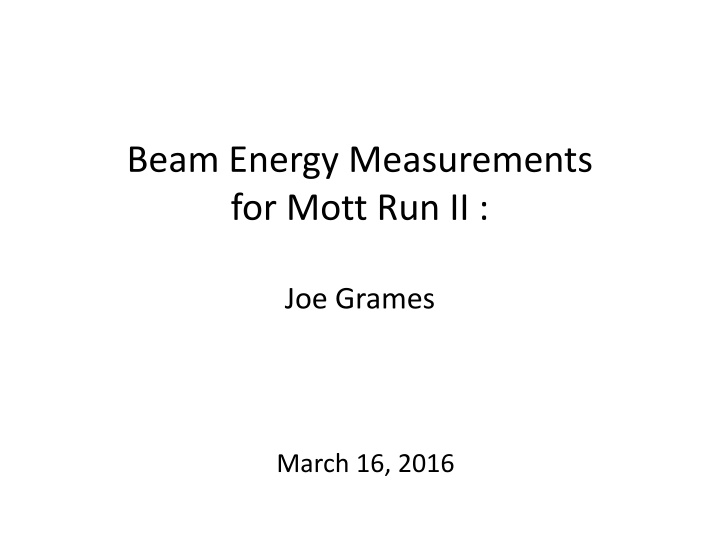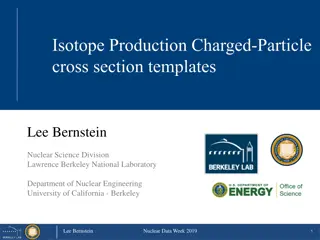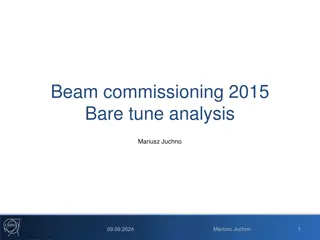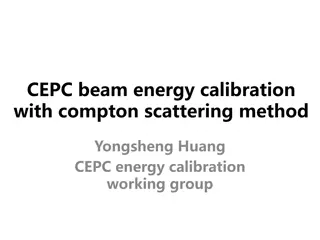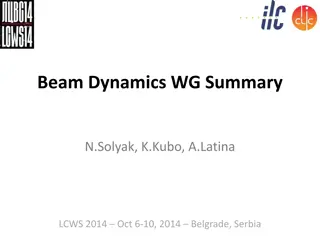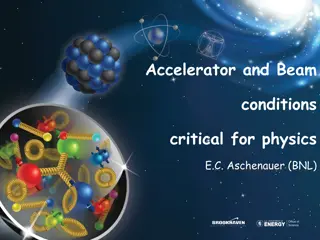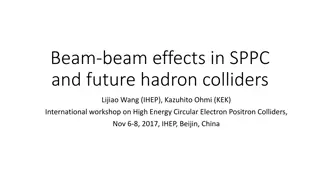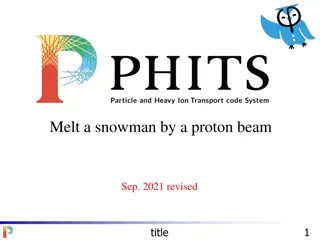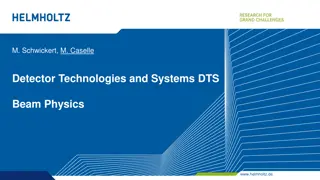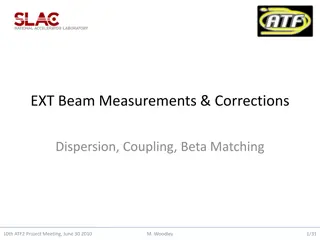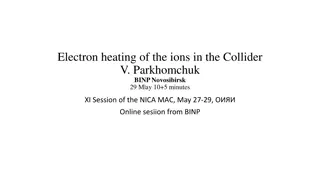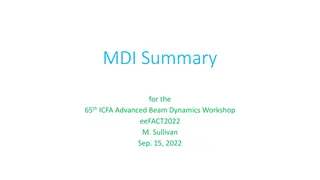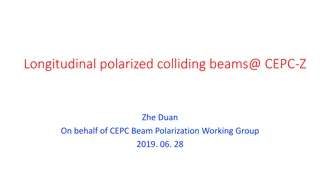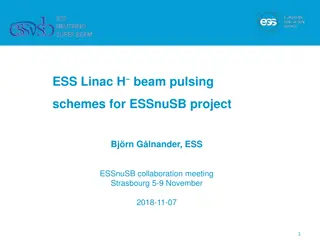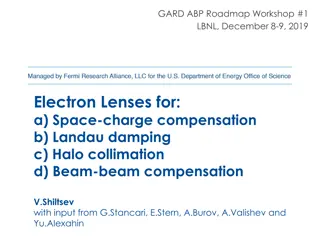Beam Energy Measurements for Mott Run II Analysis
October 2015 saw the study of Mott analyzing power versus beam energy, with the exploration of magnetic fields' impact on trajectory. Detailed examination of the MDL field map and TOSCA model provided insights for ideal operation. The analysis also delved into error budgets, conclusions, and the significance of resolving discrepancies. The study involved varied beam kinetic energy steps and recorded critical parameters such as cavity gradient and beam positions.
Download Presentation

Please find below an Image/Link to download the presentation.
The content on the website is provided AS IS for your information and personal use only. It may not be sold, licensed, or shared on other websites without obtaining consent from the author.If you encounter any issues during the download, it is possible that the publisher has removed the file from their server.
You are allowed to download the files provided on this website for personal or commercial use, subject to the condition that they are used lawfully. All files are the property of their respective owners.
The content on the website is provided AS IS for your information and personal use only. It may not be sold, licensed, or shared on other websites without obtaining consent from the author.
E N D
Presentation Transcript
Beam Energy Measurements for Mott Run II : Joe Grames March 16, 2016
Oct 2015 studied Mott analyzing power vs. beam energy. Varied beam kinetic energy 4.5-5.3 MeV in 0.2 MeV steps. Record cavity gradient, Bubble dipole, steering coils, beam positions. MHB0L02A? MHB0L02B? MHB0L02? MDL0L02? MQJ0L03? IPM0L03? MQJ0L02? MBH0L03? IPM0L02? R028? UNDEFLECTED? = 25.0 SRF? CAVITY? BPM s? STEERING? COILS? QUAD s? DIPOLE?
J. Benesh, A detailed examination of the MDL field map and the TOSCA model of this 5 MeV dipole , JLab-TN-15-017. TN provides model for ideal operation with P/P = 0.1% BL = M0 + M1 P + M2 P2 + M3 P3 + M4 P4 + M5 P5 M0 = +4.811 M1 = -1416.2 M2 = +1.2399 M3 = -0.1646 M4 = +0.009795 M5 = -0.00021257 R028 MV/m MDL0L02 G-cm 7109.57 7384.34 7646.01 7927.59 P dP MeV/c 5.035 5.229 5.415 5.614 5.797 MeV/c 0.005 0.005 0.005 0.006 0.006 3.35 3.74 4.12 4.5 4.89 8185
Magnetic fields other than dipole play important role: o Stray By field (red points) from Earth and Ion Pumps o Distributed mu-metal helps shield beam from stray field o Steering coils provide distributed point-correction Constructed simple model to track fields o Plots show trajectories for 4.5-6.5 MeV/c in 0.5 MeV/c increments o Without steering coils beam is lost to pipe wall x=1.75cm o With steering coils orbit is realistic and quasi-independent of momentum With Stray, Mu-Metal, Steering Coils Without Fields
Record SRF gradient, steering coils, Bubble dipole and beam positions. Convert recorded beam positions (.XPOS) to absolute survey positions (.XCOR). o Assumed calibration of beam position monitor to quadrupole = 0.50 mm o Assumed survey of quadrupole to absolute coordinates =0.25 mm
Model trajectories using beam positions and propagate uncertainties o Use 0L BPM s to constrain orbit and predict beam (X,X ) at dipole MDL0L02 o Use (X,X ) at dipole and 5D BPM s to determine how much <> 25.0 o Correct Jay s model calculation proportionally : PTOSCA(25.0 ) [25.0 /(25.0 + )] Model of Deflected 5D beam line Model of Undeflected 0L beam line Model predicts dipole deflected beam in excess of 25.0 by < >: < > = 1.311 0.267 mrad = 0.0751 0.015
Error budget for Mott Run II Summary for Mott Run II Conclusions o (Riad) Resolve the probe/magnet/EPICS discrepancy o (Joe) Re-compute and finalize energies and uncertainties o Extent to which this matters depends on sensitivity of S_eff v. Energy
